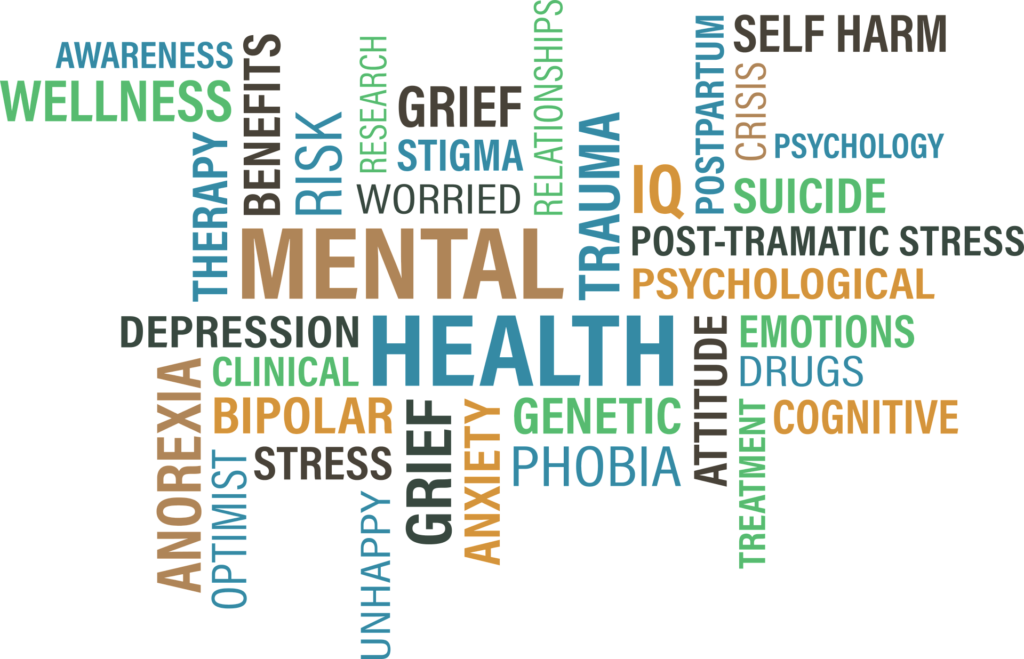081-4797-7173
HAS THERE EVER BEEN A SOCIAL MEDIA MARKETING GUIDE OVER THE YEARS?
If you’ve ever found yourself pondering ‘what does a social media marketing guide truly entail? How can I tap into the wisdom of industry experts and seasoned professionals in this field?” Allow me to share that over the years,social media marketing has evolved significantly. It’s not just about posting contents; it’s a strategy. And what we’ll be doing here is to learn and gain insights from those who’ve been there before us, learn from their successes and failures.
In this article, we’ll be looking at 10 books/guides on social media marketing, drawing from the expertise of industry leaders, to empower you with the knowledge needed for the success of your business.
- Social media marketing: Powerful tips and tricks for business growth(2019) by Mathew Roy:
In this book, the writer started by explaining in clear details what social media is in clear terms. ‘Social media marketing involves attracting traffic or attention through social media sites.’ He went further to explain why the connection between search engines and social media marketing is significant.
Why would a marketer, or a website focused on search engines, be interested in social media? These book contains practical steps and many more strategies you can follow while creating your own marketing strategy. Here’s the link to the book.
- Extensive guide to social media marketing:Unique way to use social media for business and make huge cash. by Dr Sandra William(2021 edition)
This book is a comprehensive guide used by Stanford Continuing Studies for teaching Social Media Marketing. Fully updated for 2021, it includes a new chapter on TikTok. The approach is platform-specific, offering step-by-step marketing strategies for Facebook, Instagram, TikTok, LinkedIn, YouTube, Twitter, and Pinterest. Real reviews emphasize its effectiveness compared to other books. It teaches advertising on social media platforms without financial loss, supported by videos demonstrating usage.
In this book are Worksheets that guide users through each platform, and a companion Marketing Almanac provides free tools for social media marketing. The book facilitates practical learning, making it a valuable resource. Here’s the link to the book.
- No B.S guide to Direct Response Social Media Marketing by Dan.S.Kennedy and Kim Walsh Phillips.
In this book, both genius writers has handed the secret sauce of this thing called social media marketing. They provided insights into the necessity of converting social media traffic into sales, emphasizing six direct-response principles crucial for effective campaigns. Delving into the most powerful marketing strategy by Google, they guide readers on achieving riches through niche targeting and becoming customer magnets.
The book explores the monetizing magic of compelling emails and shares strategies for growing lists without initial advertising costs. Readers will discover the art of turning passive content into active conversion tools, creating devoted fans, and harnessing offline secrets in social media. All these and many more you can get right here.
- Jab, jab, jab Right hook: How to tell your story in a noisy social world(2013) by Gary Vaynerchuk:
In his book, Gary Vaynerchuk, a bestselling author and social media expert, imparts valuable advice on customer connection and outperforming competitors. A fusion of the best from “Crush It!” and “The Thank You Economy,” “Jab, Jab, Jab, Right Hook” serves as a practical guide for effective social media marketing strategies. Vaynerchuk emphasizes the importance of planning the “right hook” in social media strategies, representing the impactful sale or campaign.
Amidst changes in social media platforms, he highlights the evolving trend of combining jabs and right hooks for success. Vaynerchuk underscores that, in this context-driven era, tailored, platform-specific content is paramount for optimal results on Facebook, Instagram, Pinterest, Twitter, and beyond. Here’s the link to the book.
- Social media marketing workbook: how to use social media for business(2022) by Jason McDonald Ph.D.
This bestselling workbook, used by Stanford Continuing Studies, is updated for 2023 with a focus on ‘Recommendation Engines’ vs. ‘Traditional Social Media Platforms.’ Look into platform-specific marketing on Facebook, Instagram, TikTok, LinkedIn, YouTube, Twitter, and Pinterest. Access real reviews, watch videos, and use worksheets guiding you for each platform. Get free tools from the Marketing Almanac.
Authored by Jason McDonald, a practitioner of Social Media Marketing, this book covers content marketing, advertising strategies, LinkedIn optimization, Twitter tactics, Instagram, YouTube, TikTok, Pinterest, and email marketing. It’s a comprehensive guide in plain English by a leading instructor from Stanford Continuing Studies. Here’s the link to the book.
- 500 social media marketing tips(2016) by Andrew Macathy:
Struggling with social media trends for your business? Unsure where to start or overwhelmed? “500 Social Media Marketing Tips” is your solution. This comprehensive guide provides actionable strategies for Facebook, Twitter, Instagram, LinkedIn, Pinterest, YouTube, Snapchat, TikTok, and more. Written specifically for busy business owners, it’s written in simple English without unnecessary fluff.
Learn how to focus on one network or explore randomly for valuable insights to grow your business. Learn why every business needs a social media marketing strategy, foundational principles, effective content sharing, audience growth tips, and more. Here’s the link to the book.
- Out of the box owl: Not your basic pitch marketing(2016) by Mary Shannon Moore.
Out of the Box Owl” isn’t your typical marketing book; Mary Shannon Moore has unlocked another approach to business growth through social networking. Drawing from 12 years of dedication and millions in profitable investments, Moore shares her proven marketing plan that propelled her to become a leading realtor in Southwest Florida.
Each chapter is a treasure of value, offering step-by-step instructions for implementing online strategies, from effective social media platform selection to lead generation, minimizing advertising costs, boosting sales through engagement, and enhancing search engine ranking.
This book isn’t exclusive to real estate; it’s a guide for any entrepreneur to build a lasting, lucrative business using social media. “Out of the Box Owl” equips you with the tools and knowledge to navigate strategic online marketing successfully. Here’s the link to the book.
- SEO for growth: the ultimate guide for marketers, web designers and entrepreneurs (2016) by John Jantsch and Phil singleton
SEO for Growth” by John Jantsch and Phil Singleton is a comprehensive guide to navigating the evolving world of search engine optimization (SEO). It emphasizes the importance of SEO as a key growth channel for businesses in today’s digital age. The book covers the new rules of SEO, providing insights on understanding search engines, algorithms, and design changes.
From content creation to social media engagement, online reputation management, and effective link building, the authors offer practical techniques for building a revenue-generating website. Here’s the link to the book.
- Color your message: The art of digital marketing and social media ( 2014) by Lisa Caprelli
Best Seller Color Your Message” delves into the significance of digital marketing beyond 2016. With global video traffic reaching 79%, the book guides you through artful and vibrant use of digital tools for branding, advertising, and marketing. Backed by Google and Pew Research data, it explores effective practices on platforms like Google, video, websites, and social media.
Aimed at entrepreneurs, leaders, and executives, the book unveils strategies to increase business revenues through content marketing, social media, and technology, providing valuable insights at the cost of a book. Caprelli’s artistic approach offers a fresh and different perspective of soaring high in the marketing field. Here’s the link to the book
- Digital marketing sound off: Tops, Tactics, tools and predictions from 101 digital marketing specialists (2018) by Matt Chiera
In “Digital Marketers Sound Off,” 101 digital marketing specialists share tools, tips, tactics, and future predictions. Covering SEO, Google AdWords, Facebook Ads, PR, Email Marketing, Content Marketing, Social Media Marketing, and Affiliate Marketing, it offers insights from Fortune 500 marketers, freelancers, agency owners, and consultants.
Whether a beginner or expert, the book provides valuable information, including daily tools, effective tactics, success metrics, improvement tips, common mistakes, and future predictions in the dynamic field of digital marketing. Here’s the link to the group
Conclusion
Wrapping it up, this guide isn’t just about cracking the code to social media marketing, it’s the hands-on toolkit that every business owner needs for real-world success. It’s not just learning, it’s practical wisdom from industry experts. So don’t limit yourself to these books, read more books, guides, and journals.
Powerful Stress Management Techniques to Navigate Daily Stress with Ease

Image by Gerd Altmann from Pixabay
We live in a society where it is virtually hard not to feel stressed as a result of increasing problems such as unemployment, financial crises, natural disasters, wars, family issues, and many more. You don’t even have to be a parent, worker, supervisor, or in a relationship to be stressed these days; you just have to be a human living on planet Earth. As a result, the necessity of learning how to deal with stressful situations cannot be overemphasized. That is why, in this article, we will look at numerous stress management tactics.
What exactly is stress?
Stress is our bodies’ reaction or response to pressure from a situation or life event. Although stress is frequently seen in a negative way it is not always bad. Some stress can push us to perform better, but too much stress can overwhelm us and interfere with our ability to function.
Types of Stress
To better understand stress, we need to first understand its two basic kinds, which are Eustress and Distress.
Eustress
This is a type of good stress that arises when we believe we have control over a difficult situation. Eustress can make us feel energized, concentrated, and excited. It can also boost our productivity, creativity, and learning. For example, taking an exam that we have well prepared for, or beginning a new job that we are enthusiastic about.
Distress
Distress is an unpleasant and overwhelming form of stress. It happens when we believe a situation is out of our control and we are unable to handle it. Distress can cause us to feel nervous, depressed, and exhausted. It can also have a negative impact on our performance, health, and relationships. For example, losing a loved one, going through a horrific incident, or being abused.
Techniques for dealing with stressful situations

Some stressful events may be avoided, while others cannot, which is why we need to understand how to limit or manage them. Here is a list of stress-management tactics that we could employ in our everyday life.
1. Recognize your stress signal: We all react differently to stress, which might include skin breakouts, irritability, impulsiveness, headaches, lack of concentration, insomnia, and other symptoms. It is critical that we recognize stress indicators early in our lives because this is the first step toward managing it. Once you’ve identified any of the above-mentioned indications, proceed to the following stage.
2. Identify the stressor: A stressor is something that causes us stress. You can’t solve a problem if you don’t know where it’s coming from. After you’ve discovered what is stressing you, write it down on a piece of paper, along with your plan for dealing with it. Then begin tackling the problem piece by piece, from the first step to the last, to make it easier to manage. This can assist you in regaining control and reducing frustration.
3. Understand the significance of self-care: This is an area that is rarely discussed. Many people prefer to devote their entire attention to their personal goals while ignoring their own well-being. You cannot effectively manage something that you do not consider vital. Your happiness impacts how successful you will be in your particular endeavor. Neglecting it can also lead to major health problems, which you can read about in this post.
4. Improve your time management: Nothing stresses us out more than having to complete so many tasks in such a short period of time. When we are overworked and behind schedule, it is tough to remain calm and focused. That is why it is critical that we plan ahead of time and do not overextend ourselves.
5. Avoid stressful situations or people: While we cannot control all situations, we can control some. This includes the people we meet and the things we see. Some people and events can be quite emotionally draining. It is critical that we endeavor to avoid such situations.
6. Avoid people pleasing: It’s critical to know your limit and to say no when necessary. Giving more than you should, whether emotionally, psychologically, physically, or financially, will only make you feel stressed. Respect your boundaries and avoid taking on extra tasks when you already have so much to do.
7. Don’t try to do everything at once; instead, divide the urgent tasks from the non-urgent tasks, and first tackle the urgent tasks.
8. Learn to take breaks between tasks when they begin to overwhelm you. Spend the break doing something you enjoy that will help you calm your mind. Stress hinders concentration and problem-solving abilities, making you less effective at work or in school.
9. Learn to express your emotions more openly. It is not advisable to hide your emotions; instead, share your concerns in a respectful and honest manner.
10. Change your perspective because it determines the level of stress that an event can bring you. Consider things from a positive standpoint. Concentrate on what you can do to remedy the problem rather than how it makes you feel.
11. Adjust your expectations, because things do not always go as planned. Avoid perfectionism and focus on doing your best rather than obsessing over every little detail. Set realistic goals for yourself.
12. Strive to strike a balance between your personal and professional lives. Make time for fun and things that interest you.
13. Have a network of people who can offer you emotional support when you need it. For example, family, friends, colleagues, the community, and so on. Spend time with them and express your feelings.
14. Get enough sleep; not getting enough rest might cause stress hormones to be released.
15. Adopt a healthy lifestyle by watching what you eat and drink. Avoid consuming too much sugar and stimulants, such as coffee, energy drinks, soft drinks, chocolate bars, and so on. Make time for exercise as well, and try to be consistent with it.
16. Leave room for errors because we live in an imperfect world. Learn to forgive and don’t expect everyone else to be perfect because you aren’t.
17. Acceptance: Embrace the things you cannot control and stop trying to control everything else.
18. When the tension gets unbearable, see a therapist.
Always remember that stress is not always negative because it can inspire us to do better. However, it is still critical to appropriately treat it because bad management can lead to far worse conditions, even life-threatening scenarios. Always be aware of how our health can affect our ability to succeed in our own personal pursuits.
Cellular Casino games For real Currency
Blogs
Here are around three a real income gambling establishment bonuses that we believe is a knowledgeable now offers to possess relaxed people looking for specific extra money or added bonus revolves. Make sure you below are a few this type of incentives and you may promo also offers as the they’re able to really improve your money. (more…)
Finest Casino Software To possess To experience Real money Game To your Mobile
Articles
Once you gamble online slots for the a cellular, you can enjoy yet deposit alternatives because you you are going to assume away from a desktop web site. By we suggest borrowing and you may debit cards, e-purses and also Bitcoin. (more…)
Crafting a Winning Social Media Strategy: A Comprehensive Guide
In the fast-paced digital landscape, having a robust social media strategy is not just an option; it’s a necessity for businesses looking to thrive in the online realm. In this comprehensive guide, we’ll delve into the key components of creating a successful social media strategy and explore how Luemprex Digitals can be your trusted partner in achieving digital excellence.
Understanding the Basics
Define Your Objectives
Before diving into the intricacies of platforms and content, take a step back to define your objectives. What do you want to achieve with your social media presence? Whether it’s brand awareness, lead generation, or customer engagement, having clear goals will guide your strategy.
Know Your Audience
Understanding your target audience is pivotal. What platforms do they frequent? What content resonates with them? Luemprex Digitals offers comprehensive audience analysis services to ensure your strategy aligns perfectly with the preferences and behaviors of your audience.
Platform Selection
Not all social media platforms are created equal. Each platform has its unique demographic and content style. Choose platforms that align with your business goals and resonate with your audience. Luemprex Digitals specializes in platform optimization, helping you identify the platforms that will yield the best results for your business.

Content is King
Quality Over Quantity
Creating valuable and engaging content is paramount. Luemprex Digitals prides itself on its content creation services, offering everything from captivating graphics and attention-grabbing visuals to compelling copy that resonates with your audience.
Consistency is Key
Maintain a consistent posting schedule. Luemprex Digitals can help you plan and execute a content calendar, ensuring a steady stream of high-quality content that keeps your audience engaged.
Branding Matters
Create a Cohesive Brand Image
Your social media profiles should reflect your brand identity consistently. Luemprex Digitals excels in comprehensive branding solutions, from designing eye-catching logos to crafting a cohesive brand narrative that leaves a lasting impression.
Visual Appeal
In the visually-driven world of social media, aesthetics matter. Luemprex Digitals provides top-notch graphic design services, ensuring your visuals are not only eye-catching but also align with your brand identity.
Engage Your Audience
Two-Way Communication
Social media is not a one-way street. Engage with your audience through comments, messages, and polls. Luemprex Digitals offers social media management services, ensuring timely and meaningful interactions with your audience.
Influencer Collaborations
Leverage the power of influencers to expand your reach. Luemprex Digitals can connect you with relevant influencers, managing collaborations that align with your brand values and objectives.
Analytics and Optimization
Monitor and Analyze
Regularly analyze your social media performance using analytics tools. Luemprex Digitals provides in-depth analytics services, helping you understand what works and what needs improvement.
Continuous Optimization
Social media is dynamic. Adapt and optimize your strategy based on analytics insights. Luemprex Digitals offers ongoing optimization services, ensuring your social media strategy remains effective in an ever-changing digital landscape.
Luemprex Digitals: Your Trusted Digital Partner
Luemprex Digitals is not just a digital solutions provider; we are your strategic partner in achieving digital excellence. From crafting a compelling brand identity to implementing a data-driven social media strategy, we offer a comprehensive suite of services to elevate your online presence.
Our Services
1. Branding: Our expert team will work closely with you to create a brand identity that sets you apart in the digital sphere.
2. Logo Design: A memorable logo is the cornerstone of brand recognition. Let us design a logo that captures the essence of your business.
3. Graphics: Eye-catching visuals are crucial in the online world. Our graphic design services ensure your content stands out from the crowd.
4. Training: Equip your team with the skills needed to navigate the ever-evolving digital landscape. Our training programs cover everything from social media management to content creation.
Etc.
Crafting a successful social media strategy requires a blend of creativity, data-driven insights, and a commitment to excellence. Luemprex Digitals is here to be your guiding force on this digital journey.
Ready to elevate your digital presence? Contact us today for a consultation. Let’s transform your social media strategy and propel your business to new heights.
Contact Luemprex Digitals Now!
How Insufficient Sleep Harms Your Mental And Physical Health

Sleep is a regular natural state of decreased consciousness and physical activity. That is important for both mental and physical health because it allows the body to repair and renew itself. While we sleep, our brain combines memories, examines information, and regulates our emotions. Sleep is divided into two stages: NREM sleep (non-rapid eye movement sleep) and REM sleep (rapid eye movement sleep).
Understanding the stages of sleep

1. NREM sleep (Non-rapid eye movement sleep)
This stage is extremely important since it is when the body goes through critical repair processes. NREM sleep is separated into three stages, each of which serves a particular purpose. Stage three is when the individual falls into a deep sleep and is difficult to awaken.
During this stage, the body heals muscles, stimulates growth and development, and improves the immune system. These repair procedures are regulated by a complex dance of neurotransmitters and hormones, which contributes to general physical well-being.
2. REM Sleep (Rapid eye movement sleep)
We have increased brain activity, heart rate, blood pressure, and breathing during REM sleep, which resembles wakefulness. This stage is critical for cognitive activities such as memory consolidation, learning, and emotional control.
Dreams occur during this stage of sleep, demonstrating its role in emotional processes and mental well-being. The vivid dreams associated with REM sleep are created by the intricate dance of neurotransmitters such as acetylcholine and serotonin.
The significance of sleep in our well-being
1. Physiological processes:
Adequate sleep results in a balanced hormonal environment. This can potentially affect metabolism, stress response, and general hormonal activity. The body regulates hormone release during the sleep cycle, including growth hormone and cortisol.
Cortisol is a hormone that acts as a natural alarm clock in our bodies, assisting them in dealing with stress. It rises in the morning to enhance wakefulness or alertness, and falls at night to aid with sleep. Disruptions in this cycle, which are frequently noticed in irregular sleep habits, can contribute to increased stress and possibly long-term health consequences.
2. Immune system modification:
Sleep is also an important immune system regulator. During sleep, the body generates and releases cytokines, proteins having immune-boosting effects. T-cells, which are essential components of the immune response, actively patrol the body during periods of rest.
As a result, persistent sleep deprivation might impair these systems, jeopardizing the body’s capacity to fight infections and diseases.
3. Cognitive functions:
Memory consolidation happens during sleep, which is a process in which the brain collects and organizes knowledge learned during the waking hours. During NREM and REM sleep, the hippocampus, a region crucial for memory, becomes more active, increasing the retention of knowledge and experiences. Sleep also has an impact on our creativity, problem-solving skills, and overall cognitive performance.
4. Emotional Wellbeing:
Sleep has a significant impact on our emotions. Getting enough sleep promotes emotional resilience, allowing individuals to efficiently handle stress and regulate mood. During sleep, the amygdala, a critical role in human emotional processing, interacts with the prefrontal cortex. This adds to our emotional stability and adaptive reactions to adversity.
Consequences of Sleep Deprivation
- Regarding our bodily health: Aside from the immediate influence on our mood and cognitive performance, inadequate sleep has been related to an increased risk of chronic diseases. These include cardiovascular disease, obesity, hallucinations, migraines, and diabetes. Sleep is linked to metabolic functions, and disruptions in sleep patterns can upset these sensitive balances.
- On our emotional well-being: Sleep deprivation can contribute to emotion and mood problems, making you irritated, nervous, depressed, or impulsive.
- On our psychological health: Lack of sleep can contribute to exhaustion. May also increase your chances of getting or worsening mental illnesses if you already have one.
- On our Cognitive processes: A lack of sleep might have an impact on our thought processes. This can lead to a lack of concentration, a lack of focus, confusion, memory loss, and problem-solving abilities, making it more difficult to cope with stress.
Ways to Improve Our Sleeping Habits

- Improve your time management skills.
- Maintain a consistent sleep routine.
- Avoid alcohol, caffeine, nicotine, and large meals before going to bed.
- Make your bedroom cozy, dark, peaceful, and cool.
- Avoid exposure to blue light from screens such as television, computers, and smartphones before going to bed.
- Before going to bed, try to relax by reading, listening to music, or meditating.
- Napping too much or too late in the day can interfere with your nighttime sleep.
- Include exercise in your everyday routine, but not too close to bedtime.
- If you wake up during the night, avoid looking at your phone because it can disrupt your sleep.
- Seek expert help if you have chronic or severe sleep difficulties, such as insomnia, hypersomnia, sleep apnea, or narcolepsy.
Conclusion
Sleep is a dynamic, multidimensional process that is more than just rest. Our sleeping habits can have a positive or negative impact on our health, therefore we should be extremely intentional about it. Recognizing sleep’s tremendous impact on our unique biology stresses the importance of developing appropriate sleep patterns for a long and prosperous existence.
The Strong Connection Between Our Mental Health and Well-being
Mental health is often overlooked in today’s world due to its lack of understanding and importance for our well-being.
Some believe it’s a mental illness, while others view it as psychosis, which translates to insanity or disconnection from reality. Physical health is easier to manage than mental health due to its perceived simplicity to others. Which is why in this article, we will be looking at the concept of “mental health” and its role in our overall well-being.
So let us begin by defining what the term “Mental Health” means.

What exactly is mental health?
Mental health refers to the overall well-being of our mind and emotions, encompassing our thoughts, behaviors, actions, feelings, and ability to navigate life’s challenges. It is the central hub of our psychological, emotional, and social well-being, as they are all interconnected.
Factors Affecting Mental Health
Mental health is affected by a complex combination of individual, social, and environmental factors. Some of these can have a favorable or negative impact on our mental health, and they are as follows:
1. Biological and genetic
Some mental health illnesses, such as schizophrenia, ADHD, bipolar disorder, and depression, have a genetic component and may run in families. This condition can also be influenced by biological variables such as hormones, neurotransmitters, brain shape, and function.
2. Environmental Factors
Our mental health can be influenced by the physical and social environments in which we live, work, learn, and play. Poverty, violence, prejudice, pollution, natural disasters, and climate change can all contribute to or worsen mental health issues. On the other hand, factors such as education, employment, safety, and access to health care and social services can positively impact our mental health.
3. Psychological Factor
Our personality, past experiences (trauma and abuse), temperament, coping skills, emotional intelligence, and self-esteem can all influence how we perceive and respond to different events and difficulties. These elements can also influence our beliefs, attitudes, and expectations of ourselves and others.
4. Social Factors
The amount and nature of our social interactions, such as those with family, friends, colleagues, and community members, can affect our mental health and well-being. These relationships can provide us with support, comfort, and a sense of belonging, as well as less loneliness, but they can also expose us to stress, conflict, and abuse.
5. Lifestyle Choices and Events
Our lifestyle choices, such as food, exercise, substance misuse, and sleep habits, as well as some events, such as major life changes, loss, grief, work and academic stress, can all have a significant impact on our mental health.
6. Access to Healthcare
Mental health can be impacted by the availability of mental health services, stigma, financial limitations, and adequate support and treatment alternatives.
7. Cultural and socioeconomic factors
such as societal norms and expectations, peer pressure, discriminatory experiences, and the awareness and response of mental health services to different cultural needs can all have an impact on mental health.
Functions of mental health in our overall well-being.

Encouraging individuals to be extremely intentional about their mental health is the same as urging them to be very intentional about their heart health because they both act as a powerhouse. Taking care of one’s mental health is critical because of the important role it plays in one’s life, which includes:
1. Emotional Stability and Resilience:
Mental health influences our ability to understand and control our emotions efficiently and in a healthy way. which aids in rebounding from adversity, coping with stress, and promoting stability and resilience in the face of life’s obstacles.
2. Psychological or Cognitive Functioning:
A healthy mind enhances cognitive abilities like thinking, problem-solving, memory, and decision-making, enabling clear thinking, rational decision-making, and successful problem-solving.
3. Social Well-being:
Our mental health promotes social connections, allowing us to maintain positive relationships, communicate effectively, and contribute to our social community.
4. Physical Health:

Since mental health is so closely linked to physical health, it can have a favorable impact on our immune functioning, cardiovascular health, and physiological processes.
- Our immunological functions: This is the ability of the body to fight or defend itself against diseases and illnesses.
- Cardiovascular health refers to the health of the heart and blood circulation.
- Physiological processes involve a variety of bodily functions such as hormone balance, sleep control, and overall organ performance.
5. Confidence and self-esteem:
When your mind is in a favorable state, it helps you see yourself in a positive light. This good self-image promotes confidence and self-esteem, which act as strong roots that aid in your personal growth and development. It’s like having a stable foundation for becoming your best self.
6. Productivity:
Having a healthy mind improves your ability to complete tasks effectively. It increases your productivity and improves your performance in various areas of life, whether at job, school, or following personal hobbies. Consider it having a clear and focused mind that allows you to perform at your best in whatever you’re working on or learning.
7. Sleeping Pattern:
When your mental health is in good shape, it tends to support better and healthier sleeping habits which can influence how well you sleep.
8. Stress Management:
A healthy mind allows you to deal with stress more effectively. It offers excellent coping mechanisms for stressors (events that stress you out), reducing their negative effects on both your mental and physical health. So, maintaining good mental health is like having tools to deal with stress in a healthy way.
9. Life Satisfaction and Fulfillment:
Your mental health has a significant impact on how satisfied and content you feel in life. It’s about having a positive sense of well-being and purpose in your life, which contributes to your overall happiness and fulfillment. It’s like having a solid foundation for a happy, meaningful existence.
10. Emotional Expression:
Maintaining your mental health allows you to express your feelings in a healthy manner. This helps to avoid the harmful consequences of either suppressing or releasing emotions uncontrollably.
11. Behavioral Decisions:
Your mental health influences your decisions and how you behave since your behavior is influenced by your thoughts, and your thoughts are influenced by your mind. It guides you toward positive decisions and habits that benefit your entire well-being.
Negative consequences of disregarding or failing to care for your mental health

Neglecting the Mental health can lead to a variety of difficulties, which include;
- Increased Stress Level: When mental health is neglected, chronic stress can develop, causing the release of the stress hormone cortisol in the body. Over time, increasing stress hormone levels can cause inflammation, which is responsible for a variety of health concerns such as high blood pressure, heart disease, and so on.
- Weaken Physical Health: Poor mental health can have a bad effect on the immune system, decreasing the body’s ability to fight sickness. This can make an individual more vulnerable to getting sick, making it difficult for them to recover from illness.
- Broken Relationships: Mental health issues can have a negative impact on our relationships. Which includes our family, friends, and colleagues as a result of changes in mood, behavior, and communication habits. This can have an impact on our interactions with those around us, resulting in interpersonal problems.
- Reduced Productivity: Mental health issues can have an impact on our cognitive abilities. Including problems concentrating, memory loss, making decisions, and functioning well at work or in school.
- Substance Abuse: Alcohol, drugs, marijuana, and other substances may be used to cope with or escape from mental health challenges. These substances can cause addiction, worsening the mental health condition.
- Negative impact on sleep: Mental health issues can affect sleep patterns, resulting in insomnia and other sleep disorders.
- Disorder Development: Ignoring mental health concerns may allow originally manageable disorders to worsen. This can lead to conditions such as depression, which is characterized by chronic poor mood and loss of interest in activities. Anxiety disorders, characterized by excessive concern or fear, can develop and disturb daily living. Untreated mental health difficulties can sometimes progress to more complicated psychiatric diseases that impair cognition, emotions, and behavior.
The growth of these problems frequently results in difficulties with employment, relationships, and overall functioning. Which may reduce the individual’s quality of life severely.
- Isolation and withdrawal: Mental health issues can drive a person to withdraw from social activities, resulting in isolation and a reduced support network. This behavior can worsen their mental health by reducing options for connection, understanding, and help. It becomes a self-sustaining loop in which withdrawal from social connections contributes to loneliness, which is detrimental to mental health.
- Financial Implications: Mental health issues can lead to absenteeism and decreased productivity at work. Which can harm one’s career chances and financial stability. This can result in missed work days and a lack of effectiveness even when present, resulting in a decrease in income and a setback in one’s career.
- Decreased Resilience: Mental health concerns can diminish an individual’s ability to cope with life obstacles, reducing perseverance. This can lead to difficulty in recovering from setbacks, being more vulnerable to the influence of stressors, and so on.
- Negative Impact on Daily Functioning: Mental health issues can disrupt our daily activities such as eating, sleeping, and personal cleanliness, reducing our capacity to do routine tasks.
- Risk of Self-Harm or Suicide: Untreated mental health conditions such as depression, burnout, and others can lead to a strong sense of hopelessness, self-criticism, and profound unhappiness, which can lead to thoughts of self-harm or suicide in severe situations.
Methods for Taking Care of Our Mental Health

- Recognize its significance in our well-being.
- Practice self-care and relaxation.
- Avoid sleeping late and try to get enough rest.
- Make time for exercise; it helps to boost mood, reduce stress, and improve cognitive capabilities, among other things.
- Be a part of a support network that can offer you emotional help when you need it. For example, family, friends, colleagues, or the community.
- Avoid substances such as alcohol, narcotics, marijuana, nicotine, etc.
- Avoid excessive consumption of stimulants (caffeine), such as soft drinks, coffee, energy drinks, chocolate bars, etc.
- Confront your negative thoughts.
- Change your perspective.
- Avoid idleness get busy or learn new stuff.
- Make time for enjoyment and interests.
- Seek professional assistance when needed.
In Conclusion
Mental health is an important part of our well-being that influences all aspects of our lives. It can be impacted by a wide range of factors that can either enhance or disrupt it, which is why it is critical for us to recognize and address any mental health issues that we may face, as well as to take proactive steps to maintain and improve our health and wellbeing, because this is the only way we can live a happier, healthier, and more fulfilling life.
WHO CAN MAKE THE RIGHT SOCIAL MEDIA MARKETING STRATEGY IN AN ORGANIZATION?
In today’s online world, having a business on the internet is super important. But just being there isn’t enough – you need a smart plan for social media. This plan is like a guide that can either make your business successful or get lost in the busy online world.
So, here’s the big question: who makes the right social media marketing in an organization? Let’s dive into this and find out who these important people are, and how they work together to make sure your business not only gets noticed online but also connects with people in a way that matters. In this article, we will discover the most important people and the teamwork needed to create a social media plan that goes beyond just being there, making your business stand out, and be truly heard in the digital world.
Understanding the role of social media marketing.
Social media marketing is the use of social media platforms to promote and advertise products, services, or brands. It involves creating and sharing content on social media networks, engaging with the audience, and running paid advertising campaigns to achieve marketing goals.
The aim is to build brand awareness, increase website traffic, and drive customer engagement by leveraging the reach of social media platforms such as Facebook, Instagram, Twitter, and LinkedIn.
Social media marketing is a dynamic and evolving field that helps the power of online communities to connect with target audiences and foster meaningful relationships.
Key stakeholders in crafting a marketing strategy.
For an organization to flourish and expand, its success depends on a well-crafted marketing strategy. Why is this important? The absence of effective marketing can lead the organization into a pitfall. The individuals responsible for making the marketing decisions play a major role in ensuring the organization’s growth.
- CHIEF MARKETING OFFICER(CMO): A Chief Marketing Officer is a key executive in an organization, entrusted with the responsibility of managing the marketing team. This high-ranking position involves much more than simply overseeing advertising campaigns. The CMO is the overseer of the organization’s marketing strategy, and his role is to shape how the company presents itself to the world.
CMO ROLE
One of the primary functions of a CMO)is strategic leadership. They are not merely concerned with day-to-day marketing operations but are in alignment with marketing efforts with the marketing efforts that shape the organization. This involves a deep understanding of the company’s mission, target audience, and market positioning. The CMO sets the course for the marketing team, ensuring that every campaign contributes to the larger goals of the organization.
- Brand management)is another crucial aspect of the CMO’s role. As the chief marketing officer of the brand, they work diligently to establish and maintain a positive and consistent brand image. This goes beyond logo design – it encompasses the perception customers have of the organization, creating a perfect narrative in the minds of their audiences. To effectively understand how the business and world work, CMOs engage in comprehensive market research and analysis. This involves being on the lookout for industry trends, understanding customer preferences, and staying informed about the strategies employed by competitors. With this knowledge, the CMO can develop marketing initiatives that not only respond to current market dynamics but also anticipate future shifts.
- Another characteristic of the CMO role is cross-functional collaboration. Beyond the confines of the marketing department, CMOs work closely with other key departments such as sales and product development. This collaborative approach ensures a unified organizational strategy, where marketing complements other aspects of the organization to drive overall success.
- Metrics and analytics play a crucial role in the CMO’s performance. Data-driven decision-making is not just a fancy word but a tool for effective marketing. CMOs leverage analytics to measure the impact of marketing campaigns, track consumer behavior, and quantify the return on investment(ROI). This information empowers them to make informed decisions, refine strategies, and optimize future projects.
- In terms of education requirements, CMOs must hold advanced degrees in marketing, business administration, or a related field.
- However, practical experience and a proven track record of success in marketing are often equally, if not more, valuable.
- Strategic thinking, effective communication, and the ability to adapt to the rapidly changing marketing ecosystem are important skills for a CMO.
- Leadership qualities, creativity, and a deep understanding of technology and data analytics are also highly prized in individuals aspiring to this role.
2. MARKETING MANAGER/STRATEGIST: While a Chief Marketing Officer is a top-level executive overseeing the entire marketing team, a marketing strategist operates more at the tactical level, focusing on crafting and executing specific marketing plans. Think of the CMO as the captain steering the ship, and the marketing strategist as the skilled navigator charting the course.
A marketing strategist’s role is like that of an architect. They’re responsible for planning the details that bring a marketing strategy to life. This involves understanding the target audience, researching market trends, and figuring out the best ways to reach potential customers.
Their key responsibilities are to:
- Understand who the customers are and what they want. This helps in crafting the best messages that resonate perfectly.
- Keep an eye on what’s happening in the market. Understand trends, competition, and what might catch people’s attention.
- Develop detailed plans for marketing campaigns. This includes deciding on the best social media platform to use, messaging tactics, and timing.
- Work closely with various teams, like creative, content, and digital marketing, to ensure everyone is on the same page.
3. VISUAL/GRAPHICS DESIGNER: A visual or graphics designer is a creative professional responsible for crafting visual designs that communicate a message or enhance the aesthetics of a product, service, or brand. They use design tools to create engaging graphics, illustrations, and layouts for various mediums such as websites, advertisements, and marketing materials.
4. CONTENT WRITER: A content writer is a wordsmith who creates written material for a variety of purposes, often with the goal of informing or persuading an audience. They produce content for websites, blogs, social media, and other platforms, tailoring their writing style to the target audience. Content writers play the role of conveying information, telling stories, and maintaining a brand’s voice.
5. EDITOR: An editor is responsible for reviewing and refining text to ensure clarity, coherence, and adherence to style guidelines. Editors correct grammar and spelling errors, enhance readability, and sometimes provide constructive feedback to writers. They play a key role in maintaining quality and consistency in written materials, be it articles, reports, or marketing copy.
In conclusion, the success of an organization hinges on a collaborative leadership approach. Whether it’s a small business or a large corporation, the way people share responsibilities matters. Like pieces fitting into a puzzle, each role, from marketing strategists to content creators, contributes to the collective success. The size of the organization determines how these roles come together, forming a dynamic leadership structure that propels the business toward its goals.
SECRETS OF A SUCCESSFUL SOCIAL MEDIA STRATEGY
Thousands of business ventures and persons sprint onto the congested platforms of the social media with a panting thirst for profit and marketplace influence.
If well-equipped to compete, they achieve their goals and stay long on the market shelves. But, the ill-equipped ones struggle to hit goals running.
Social media is one powerful tool whose force many people have failed to wield.
A social media strategy that failed in 2017 was in the case of Pepsi. Trying to prove its product as a culturally unifying force, it had the reality show star, Kendall Jenner, offer a police officer a can of Pepsi and in their words, “…and we can have her settle a Black Lives Matter standoff between protestors and police…”
An outrageous advert in a highly-tensed protest engendered by police discriminating brutality towards the Black race was a no-no.
Criticized as insensitive to its audience, it was pulled down after a thorough backlash.
Oops! I have not defined what a social media strategy is. Pardon me.
In plain words, a social media strategy is that plan that outlines your goals, audience, and tactics for using social media to achieve those goals. It is also a roadmap that helps you make the most of your social media presence and reach your target audience.
Are you ready to take your social media game to the next level? Are you frustrated with your current results and looking for the secret sauce that will get you the success you crave?
Then you’ve come to the right place!
In this article, I’ll share the little-known secrets of social media strategy that will have you wondering why you didn’t know them before. You’ll learn how to create a strategy that’s unique, effective, and results-driven.
Let’s get started!
There are many secrets to a successful social media strategy, but some of the most important ones are:
A. Defining your goals and objectives.
This is crucial because it gives you a roadmap to follow and helps you determine what success looks like for your social media strategy. Your goals and objectives should be specific, measurable, achievable, relevant, and time-bound (also known as SMART goals). For example, a specific goal might be to increase website traffic from social media by 20% in the next 6 months. A measurable goal might be to get 100 new followers on Instagram in the next 3 months.
B. Understanding your target audience.
This is important because you need to know who you’re trying to reach with your social media strategy. You can determine your target audience by looking at factors like age, gender, location, interests, and behaviors. Once you know who your target audience is, you can create content that’s tailored to them and that’s more likely to resonate with them.
C. Creating engaging and relevant content.
This is the heart of any successful social media strategy. Your content should be interesting, informative, and valuable to your target audience. It should also be visually appealing and easy to digest. Additionally, it’s important to post regularly and consistently so that you stay top of mind for your audience. Does this make sense?
D. Being consistent and active on your chosen platforms.
You must know that it is NEVER ENOUGH to just post great content – you also need to engage with your audience and respond to their comments and questions. This shows that you’re listening to them and that you care about their thoughts and opinions.
E. Measuring and analyzing your results.
The next secret is measuring and analyzing your results. Seeing proven results of your social media strategy is adequate encouragement to go further and better. They also tell you what to improve on and how. You can measure things like engagement, reach, and conversions. This data will help you make informed decisions about your strategy going forward.
Have you learnt to measure your social media strategy progress? Let me teach you a bit.
* Let’s start with Facebook. On Facebook, you can measure things like page likes, post reach, post engagement, and post clicks. You can also use Facebook Insights to get more detailed information about your audience and how they’re interacting with your content.
* For Instagram, you can measure things like followers, likes, comments, and saved posts. You can also use Instagram Insights to get more detailed information about your audience. And for Twitter, you can measure things like followers, retweets, likes, and mentions. You can also use Twitter Analytics to get more detailed information.
* On YouTube, you can measure things like video views, watch time, likes, comments, and subscribers. You can also use YouTube Analytics to get more detailed information. It’s also important to pay attention to audience retention – that is, how long people are watching your videos.
F. Learning and adapting based on your results.
This is the last rung on the ladder. Learning and adapting based on your results means taking the data you’ve collected and using it to make informed decisions about your social media strategy.
This could include things like:
- Tweaking your content to make it more engaging.
- Adjusting your posting schedule to find the best time to post.
- Trying different platforms to see where your audience is most active.
- Testing different types of content to see what resonates best with your audience.
Never forget that growth demands learning, unlearning and relearning. Social media strategizing is not for the stiff-necked who stick to outdated ways. You must keep learning to improve.
That is how you win in the race.
Good luck, world-shakers!
Crafting Your Social Media Marketing Strategy: A Blueprint for Success

In today’s digital age, the importance of a well-crafted social media marketing strategy cannot be overstated. It’s the digital landscape’s beating heart, connecting businesses with their target audience, building brand presence, and driving growth. While the concept might sound daunting, fear not! With a little guidance and some creative thinking, you can formulate a social media marketing strategy that sets your brand apart and propels it to new heights. In this article, we’ll explore the key steps to building a robust social media strategy that resonates with your audience, boosts engagement, and delivers results. Sounds enticing? Let’s go!
Understanding Your Audience
Before diving headfirst into the world of social media marketing, you need to know who you’re talking to. Your target audience is the compass that guides your strategy. Take the time to create buyer personas, detailed profiles of your ideal customers. Understand their needs, preferences, pain points, and behaviors. Knowing your audience is like having the key to unlock the treasure chest of social media success.
Setting Clear Objectives
What do you want to achieve with your social media marketing efforts? Defining clear objectives is vital to creating a successful strategy. Your goals could range from increasing brand awareness, generating leads, driving website traffic, or boosting sales. Whatever your objectives, ensure they are Specific, Measurable, Achievable, Relevant, and Time-bound (SMART).
Choosing the Right Platforms
Not all social media platforms are created equal. It’s essential to choose the right platforms that align with your brand and target audience. For instance, Facebook is great for connecting with a wide audience, while Instagram and Pinterest excel for visual content. LinkedIn is a go-to choice for B2B connections. Analyze where your audience spends their time and focus your efforts there.
Content is King

You’ve probably heard this phrase countless times, but it remains a universal truth in the world of social media. Engaging and valuable content is the lifeblood of your strategy. Your content should inform, entertain, and inspire your audience. Utilize various content types, such as blog posts, videos, infographics, and user-generated content. Make sure your content is relatable and valuable to your audience. A great approach is to solve their problems or answer their questions.
Consistency is Key
Consistency in posting is essential to maintaining your audience’s interest. Create a content calendar that outlines when and what you’ll post. Remember that quality trumps quantity. Posting too frequently without maintaining quality can be counterproductive. Aim for a balance that suits your brand and your audience.
Engage with Your Audience
Social media isn’t a one-way street. It’s a two-way conversation. Engage with your followers, respond to their comments, and ask questions. Show genuine interest in their opinions and feedback. Building relationships is key to building trust and loyalty.
Analytics and Optimization
Regularly measure and analyze the performance of your social media marketing efforts. Tools like Google Analytics, Facebook Insights, and others can provide valuable insights. Adjust your strategy based on what’s working and what isn’t. Experiment with different posting times, content types, and messaging to see what resonates best with your audience.
Introducing Luemprex Digital
At this point, you might be wondering how to streamline this complex process and take your social media marketing strategy to the next level. That’s where Luemprex Digital comes in! We are a dedicated team of digital marketing experts who are passionate about helping businesses like yours succeed in the digital space.
We handle all your digital needs, from branding to graphics work, logo design, and digital marketing. Our team of experienced professionals will work closely with you to create a customized social media marketing strategy that aligns with your brand’s goals and values. We believe in making your brand stand out in a sea of competition.
With our guidance, you’ll build a powerful social media strategy that not only engages your audience but also drives measurable results. We’ll help you make the most of each platform, creating tailored content and ads that resonate with your target audience.
In conclusion, formulating a successful social media marketing strategy involves understanding your audience, setting clear objectives, choosing the right platforms, creating engaging content, maintaining consistency, engaging with your audience, and continuously optimizing your efforts. Luemprex Digital is here to take your social media marketing to the next level, helping you achieve your business goals and stand out in the crowded digital landscape. Get in touch with us today to kickstart your journey towards social media success!










